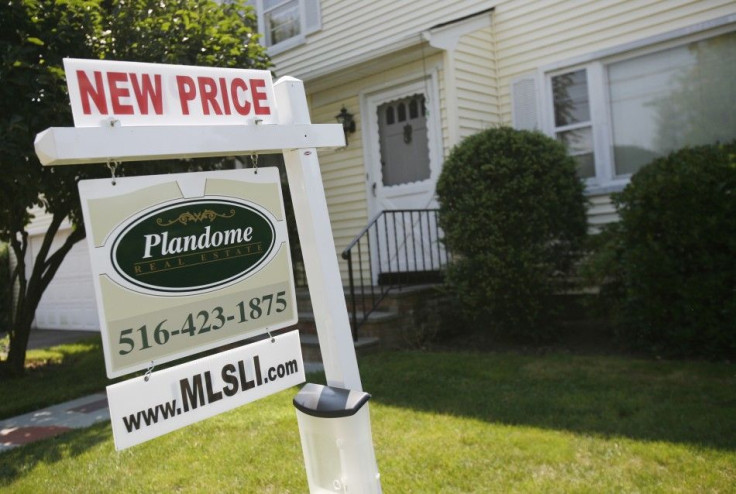Home Prices Dip Just 0.1% in June: Is U.S. Housing Market Stabilizing?
ANALYSIS

Just call it a ray of light in the U.S. housing sector, as home prices in 20 major U.S. cities fell only 0.1 percent in June from May, on a seasonally adjusted basis, according to the S&P/Case-Shiller U.S. National Home Price Survey.
However, on a year-over-year basis, home prices in those 20 major cities fell 4.5 percent -- or slightly less than the Bloomberg consensus estimate of 4.6 percent. The 12-month decline in May was 4.6 percent, the most since 2009.
In addition, the 10-city index was unchanged in June from May, but fell 3.8 percent on a year-over-year basis.
June Home Price Data: Mixed Signals
David Blitzer, chairman of the Index Committee at S&P Indices, said June's data provided mixed signals for home sellers and buyers.
This month's report showed mixed signals for recovery in home prices. No cities made new lows in June 2011, and the majority of cities are seeing improved annual rates. The National Index was up 3.6% from the 2011 first quarter, but down 5.9% compared to a year-ago, Blitzer said in a statement.
Looking across the cities, eight bottomed in 2009 and have remained above their lows. These include all the California cities plus Dallas, Denver and Washington, D.C., all relatively strong markets, Blitzer said. At the other extreme, those which set new lows in 2011 include the four sunbelt cities -- Las Vegas, Miami, Phoenix and Tampa -- as well as the weakest of all, Detroit.
These shifts suggest that we are back to regional housing markets, rather than a national housing market where everything rose and fell together, Blitzer added.
Case-Shiller: Closely Watched
Originally greeted by Wall Street with a shrug, the S&P/Case-Shiller home price index rose to market-mover status in 2008 as it became clear that the United States' housing boom during the past decade was, in fact, a bubble fueled considerably by mortgage market excesses, from borrower to lender.
The bursting of that bubble triggered record home mortgage foreclosures and mortgage back securities defaults (toxic assets), which led to the financial crisis that the U.S. and world are still trying to end today.
As a result, investors, economists, homebuilders, and homeowners alike now closely-monitor Case-Shiller home price data in order to discern clues as to when the housing slump may end -- a recovery that historically has contributed to U.S. GDP growth.
Housing Sector/Economic Analysis: The above is just modest good news -- it's just one month's data and prices could retrenchin the months ahead, particuarly as the summer moving season comes to an end -- but amid the bad news stemming from Hurricane Irene, Americans will take any good news they can get.
What's needed now: the return of the U.S. economy to robust GDP growth with at least 150,000 new jobs created per month -- that would keep home prices pointed in an upward direction in a sustained way.
© Copyright IBTimes 2025. All rights reserved.





















